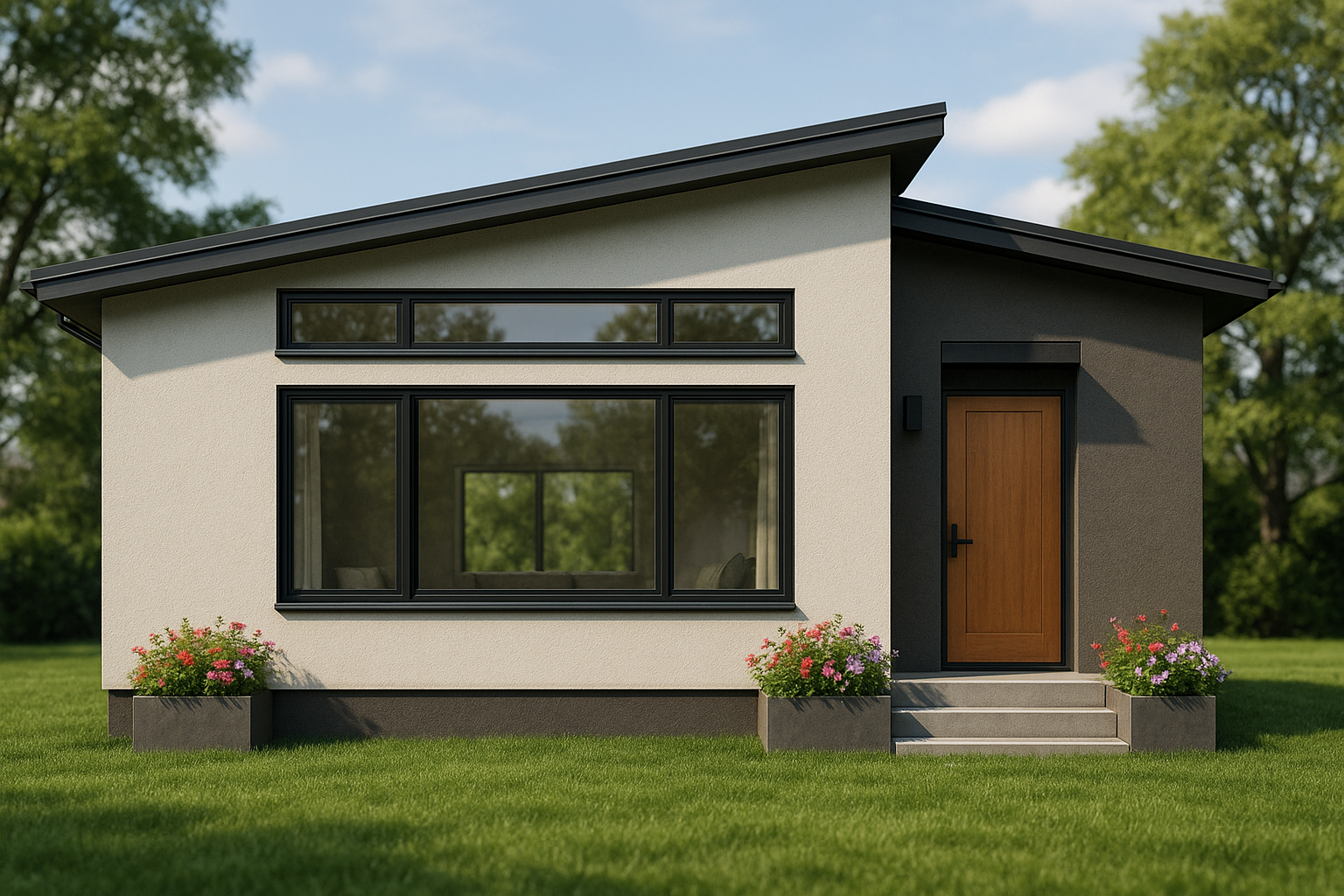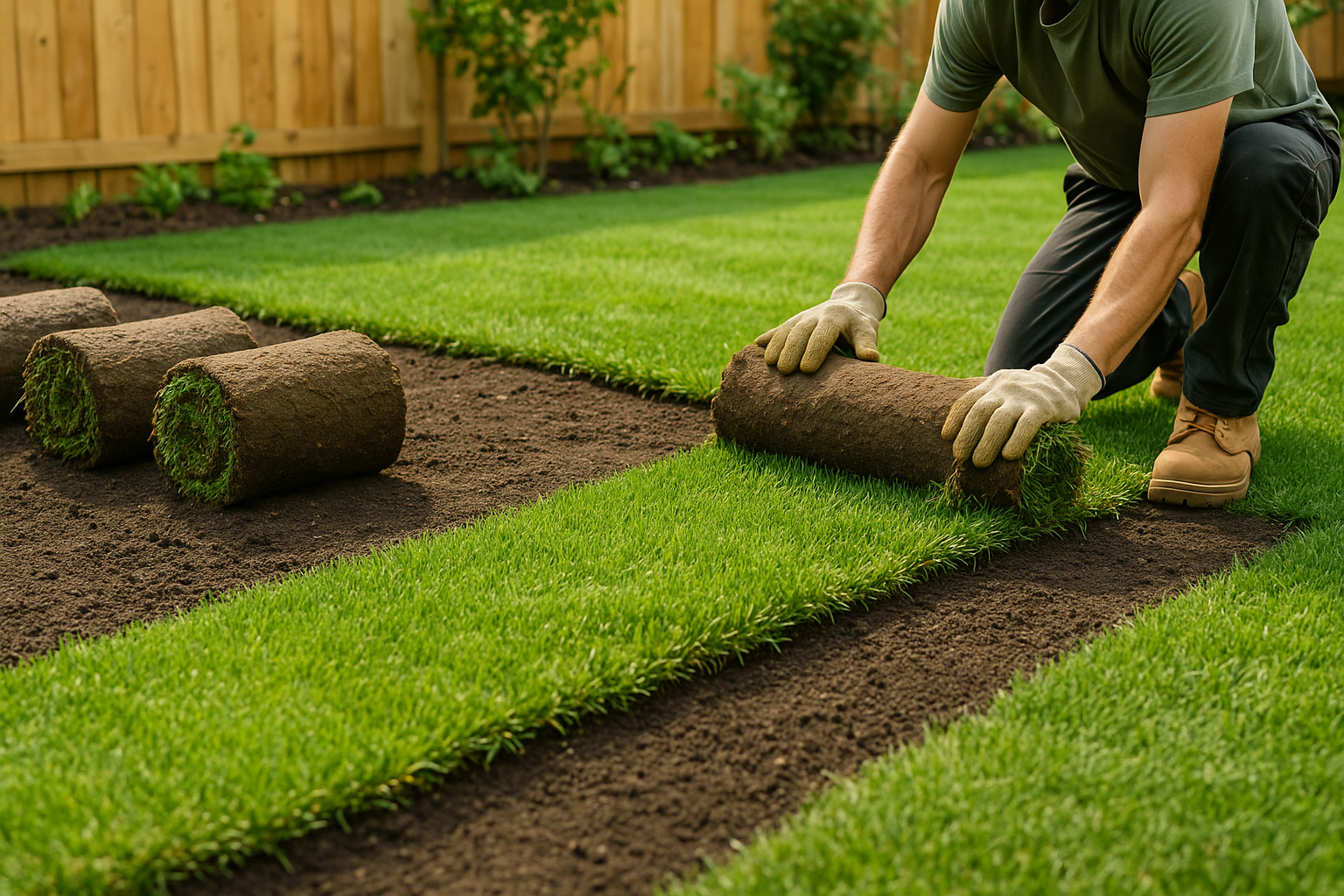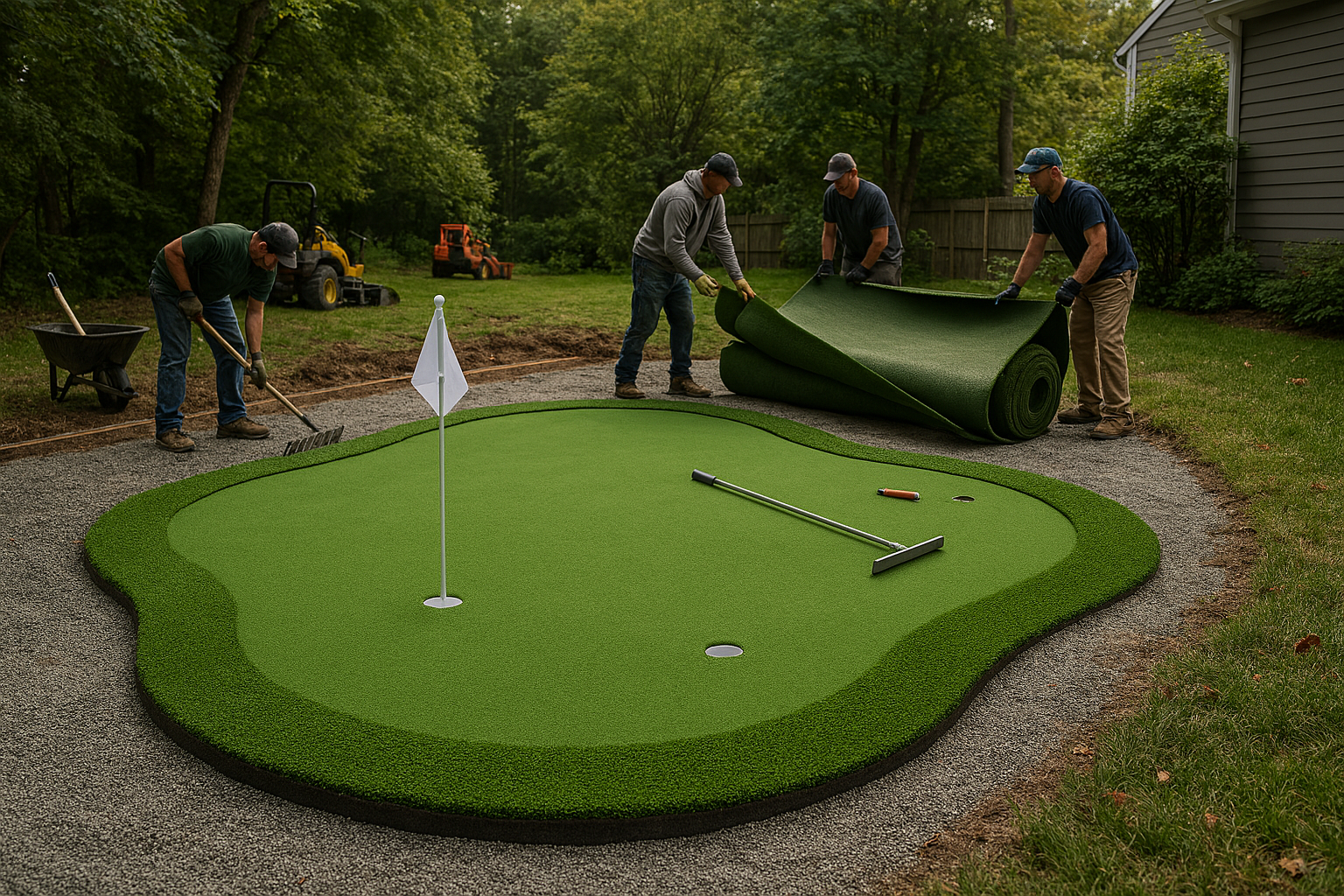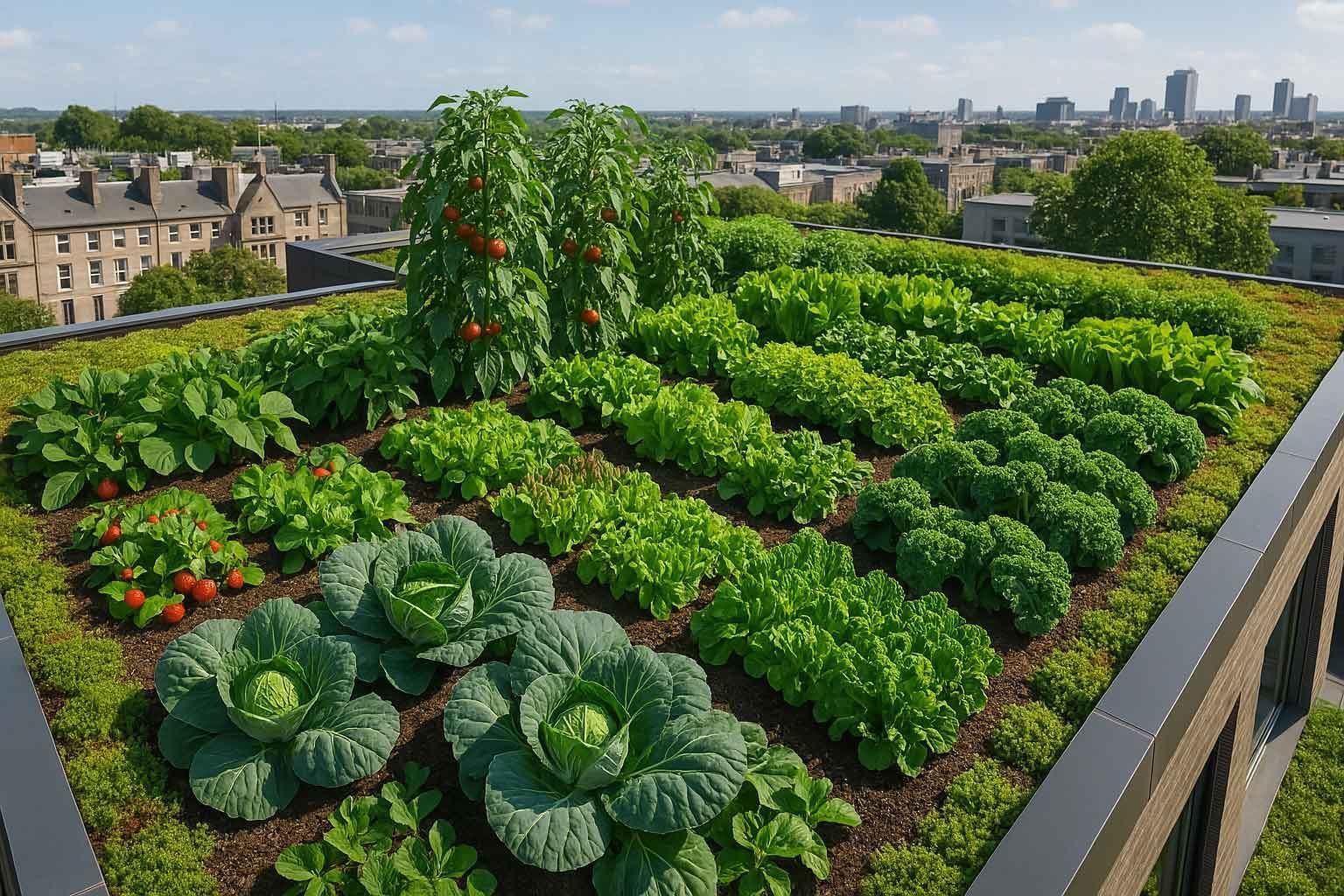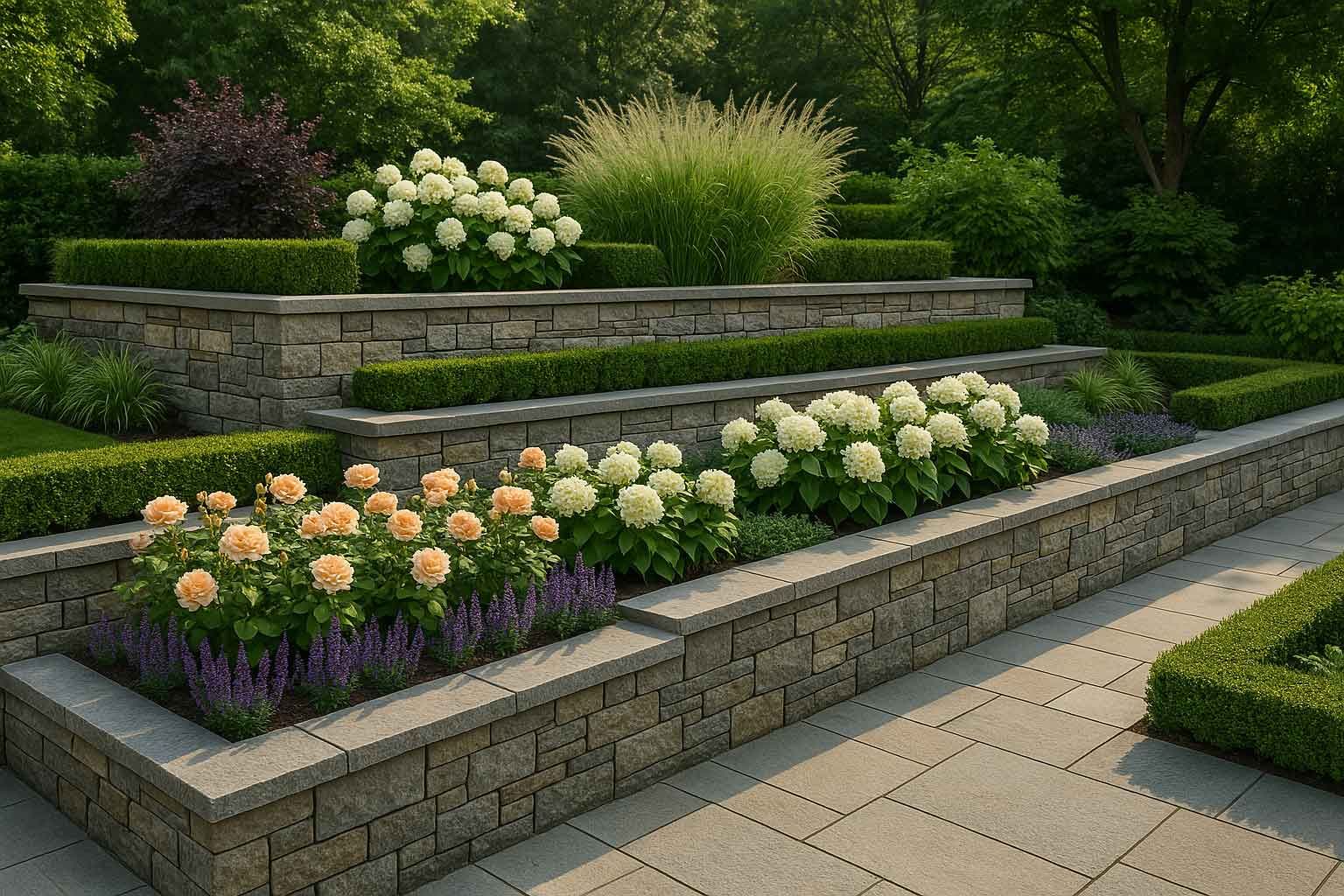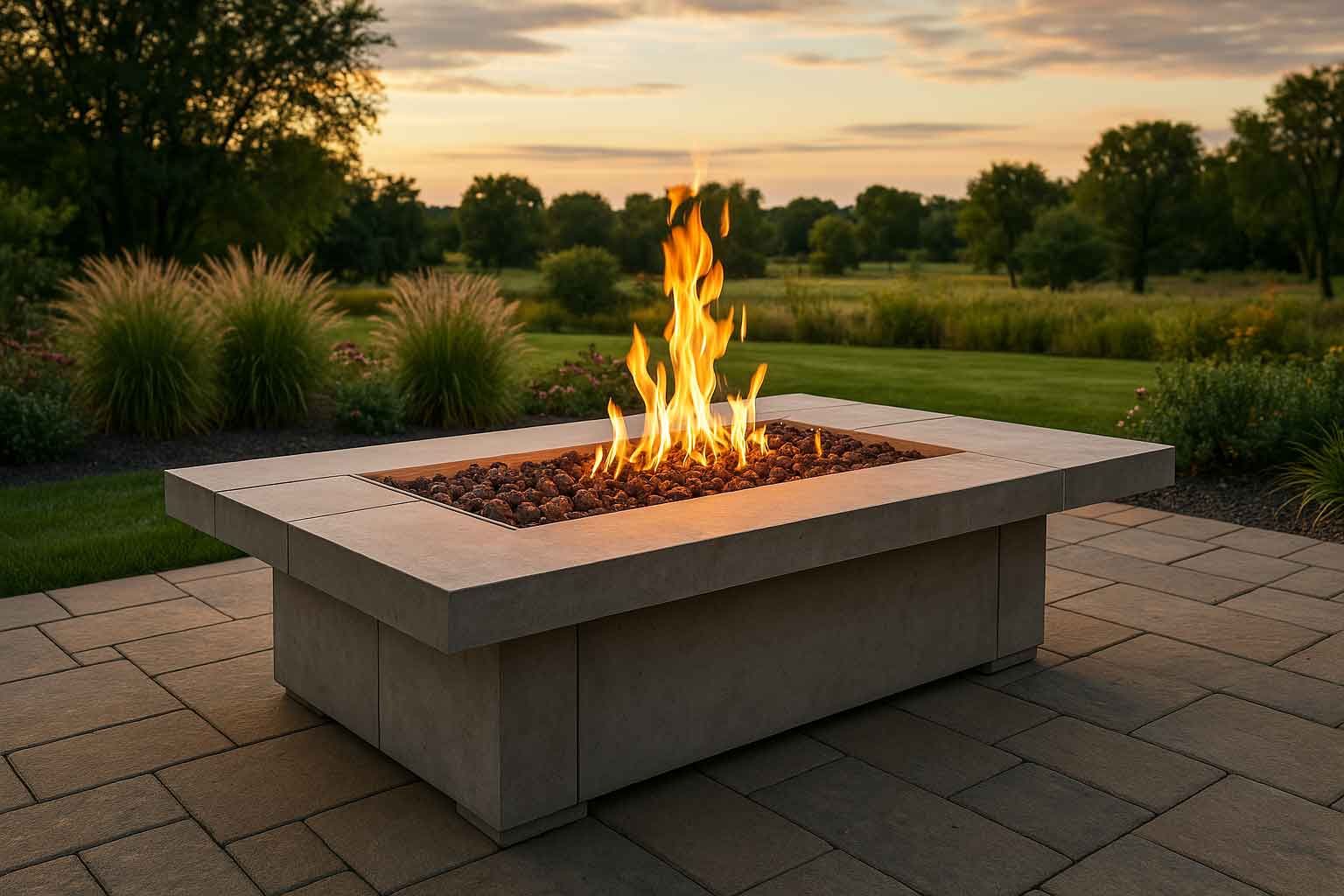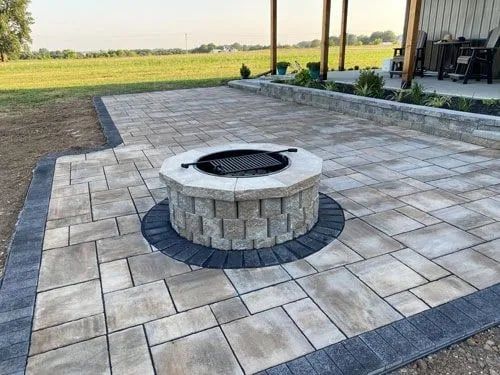Porch Builders: Creating the Perfect Outdoor Space for Your Home
Discover the benefits of working with experienced porch builders to create a stunning outdoor living space. Learn about different porch types, materials, and design trends, and find tips for selecting the right builder and maintaining your porch.
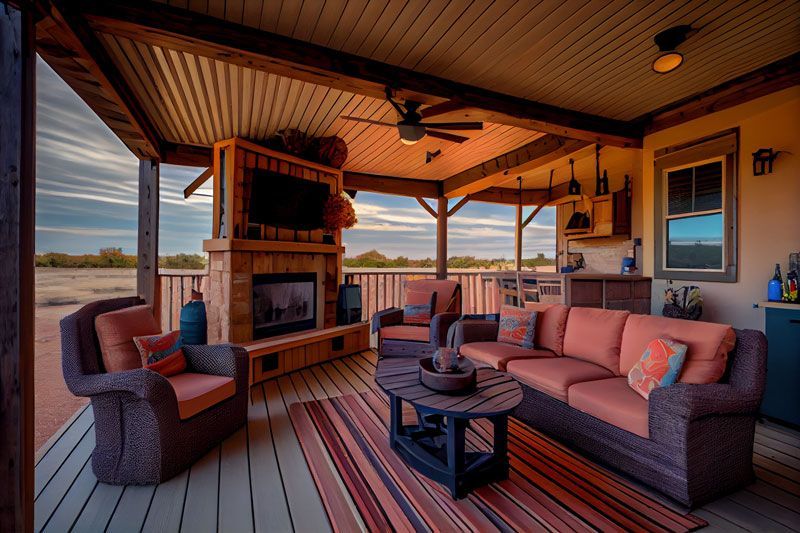
I. Introduction
A. Importance of a well-designed porch
A well-designed porch not only adds aesthetic appeal to your home but also serves as a functional space for relaxation and socialization. It acts as a bridge between your home's interior and the outdoors, allowing you to enjoy the benefits of both worlds. In addition, a thoughtfully designed porch can increase the value of your property and make it more attractive to potential buyers.
B. Role of porch builders in enhancing your home's curb appeal
Porch builders play a crucial role in enhancing your home's curb appeal. They are professionals with the expertise and experience to turn your vision for an ideal outdoor space into reality. By combining your preferences with their knowledge of design principles, materials, and current trends, porch builders can create a beautiful and functional porch that complements your home's architectural style and elevates its overall appearance.
C. Brief overview of the article
This article will discuss the qualities of a great porch builder, types of porches, and materials used in porch construction. We will also provide guidance on selecting the right porch builder and outline the building process from start to finish. Finally, we will explore porch design ideas and trends, offer tips on maximizing the use of your porch, and share advice on maintaining your new outdoor space.
II. Qualities of a Great Porch Builder
A. Experience and expertise
A great porch builder possesses extensive experience and expertise in designing and constructing porches. They should be knowledgeable about various porch styles, materials, and construction techniques. Their experience in the field enables them to anticipate and solve potential challenges that may arise during the building process, ensuring a smooth and successful project.
B. Good communication skills
Effective communication is essential when working with a porch builder. They should be able to listen to your ideas and preferences, provide valuable input, and clearly explain their plans and strategies. Good communication skills also involve keeping you informed about the project's progress and addressing any concerns or questions you may have in a timely manner.
C. Creativity and design sensibility
An outstanding porch builder demonstrates creativity and a strong design sensibility. They can envision and create a porch that is not only aesthetically pleasing but also complements your home's architectural style. They should be up-to-date with the latest design trends and be able to suggest innovative ideas that make your porch unique and functional.
D. Attention to detail
Attention to detail is a crucial quality for a porch builder. A builder who pays attention to the smallest details will ensure that every aspect of your porch, from the choice of materials to the final finishing touches, meets the highest standards. This meticulous approach guarantees a well-constructed, durable, and visually appealing porch that you can enjoy for years to come.
E. Timeliness and professionalism
A great porch builder is punctual, organized, and professional. They should respect your time by adhering to agreed-upon deadlines and promptly addressing any issues that arise during the construction process. Additionally, a professional builder will maintain a clean and safe work site, ensuring minimal disruption to your daily life while your porch is being built.
III. Types of Porches
A. Open porches
Open porches, also known as covered porches, are a popular choice for many homeowners. These porches feature a roof that provides shelter from the sun and rain, while the sides remain open to allow for natural light and air circulation. Open porches can be designed in various styles and sizes to suit your home's architecture and your personal preferences.
B. Screened porches
Screened porches are enclosed by mesh screens that keep insects and debris out while still allowing for fresh air and natural light to flow through. This type of porch is ideal for those who want to enjoy outdoor living without the nuisance of bugs or the need for constant cleaning. Screened porches can be used for dining, relaxation, or even as a play area for children.
C. Wraparound porches
As the name suggests, wraparound porches extend around one or more sides of a house, often providing a panoramic view of the surrounding landscape. These porches are particularly popular in traditional and farmhouse-style homes, offering ample space for outdoor seating, dining, and socializing.
D. Multi-level porches
Multi-level porches consist of two or more levels, either stacked vertically or connected by stairs. These porches are an excellent option for homes built on sloped lots or those looking to maximize outdoor living space without consuming too much of the yard. Multi-level porches can be designed with a combination of open and screened sections to provide various options for relaxation and entertainment.
E. Portico porches
Portico porches are small, covered porches that typically serve as the main entrance to a home. They are characterized by a roof supported by columns, creating an elegant and welcoming focal point. Portico porches not only provide shelter from the elements but also enhance a home's curb appeal by adding a touch of architectural interest.
IV. Materials for Porch Construction
A. Wood
Wood is a classic and widely used material for porch construction due to its natural beauty, versatility, and durability. Common choices include pressure-treated lumber, cedar, and redwood. While wood requires regular maintenance, such as sealing, staining, or painting, it can last for many years if properly cared for.
B. Composite materials
Composite materials are made from a combination of wood fibers and plastic, offering the look of natural wood without the extensive maintenance requirements. They are resistant to rot, insects, and warping, making them a popular choice for homeowners seeking a low-maintenance option. Composite materials are available in various colors and finishes to suit any design preference.
C. Vinyl
Vinyl is a cost-effective and low-maintenance alternative to wood. It is resistant to rot, insects, and fading, requiring minimal upkeep. Vinyl porches can be designed to mimic the look of wood or come in a variety of colors to match your home's exterior. However, vinyl may not be as sturdy as other materials and may not have the same authentic feel as wood or composite materials.
D. Aluminum
Aluminum porches are lightweight, durable, and virtually maintenance-free. They are resistant to rust, rot, and insects, making them a long-lasting option for porch construction. Aluminum can be powder-coated in various colors to match your home's exterior and design preferences. While aluminum porches may not offer the same warmth as wood or composite materials, they are an excellent choice for those seeking durability and minimal upkeep.
E. Concrete
Concrete is a strong, durable, and low-maintenance material for porch construction. It can be finished in various ways, such as stamped or stained, to mimic the appearance of natural stone or other materials. Concrete porches are ideal for homeowners seeking a solid and long-lasting foundation for their outdoor space. However, concrete can be less inviting and comfortable underfoot compared to wood or composite materials.
V. Selecting the Right Porch Builder
A. Online research and reviews
Begin your search for the right porch builder by conducting online research. Look for local builders with good reputations and read customer reviews to gain insight into their work quality, professionalism, and customer satisfaction. Websites like Houzz, Angie's List, and the Better Business Bureau can be helpful resources for finding reputable builders in your area.
B. Personal recommendations
Ask friends, family, and neighbors for personal recommendations. If someone you know has recently had a porch built or renovated, inquire about their experience with the builder. Personal recommendations can provide valuable insights and help you identify builders with a proven track record of success.
C. Interviewing potential builders
Once you have a shortlist of porch builders, schedule interviews to discuss your project and assess their suitability. During the interviews, ask about their experience, licensing, insurance, and any warranties they offer. Be sure to discuss your specific needs and preferences to ensure they can accommodate your vision and requirements.
D. Evaluating portfolios and past projects
Request portfolios from potential porch builders to examine their past work. Reviewing their completed projects can help you determine if their design style, craftsmanship, and quality align with your expectations. If possible, visit some of their finished porches in person to get a better understanding of their work.
E. Comparing quotes and services
After interviewing and evaluating potential porch builders, request detailed quotes from your top choices. Compare the quotes, considering factors such as cost, materials, timeline, and the scope of services provided. Remember that the cheapest option may not always be the best. Consider the value each builder offers in terms of their expertise, experience, and customer satisfaction before making a final decision.
VI. The Porch Building Process
A. Initial consultation and design
The porch building process begins with an initial consultation between you and the chosen porch builder. During this meeting, discuss your vision, preferences, and requirements for the porch. The builder will assess your property, consider any constraints, and provide recommendations based on their expertise. Together, you'll finalize the design, choose materials, and establish a budget and timeline for the project.
B. Obtaining permits and approvals
Before construction begins, the porch builder will need to obtain the necessary permits and approvals from local authorities. This process may vary depending on your location and the complexity of the project. Your builder should be familiar with the local regulations and handle the permit application process on your behalf, ensuring that the construction adheres to all relevant building codes and zoning laws.
C. Construction timeline
Once permits and approvals are secured, the porch builder will provide you with a detailed construction timeline. This schedule will outline the various stages of the project, from site preparation and foundation work to framing, roofing, and finishing touches. While unforeseen circumstances can affect the timeline, a professional builder will strive to minimize delays and keep the project on track.
D. Project management and communication
Throughout the construction process, the porch builder should maintain open lines of communication, keeping you informed about the project's progress and addressing any concerns or questions that arise. A project manager may be assigned to oversee the work and ensure that it stays on schedule and within budget. Regular updates and prompt responses to inquiries are essential for a successful project and a positive working relationship.
E. Final walk-through and inspection
Upon completion of the porch, you and the builder will conduct a final walk-through to inspect the workmanship and ensure that all aspects of the project meet your expectations. This is an opportunity to address any minor issues or touch-ups that may be needed. Once you are satisfied with the work, the builder will provide you with any necessary warranties and maintenance information to help you properly care for your new porch.
VII. Porch Design Ideas and Trends
A. Modern farmhouse porches
Modern farmhouse porches combine the charm of traditional farmhouse style with contemporary design elements. Key features may include exposed beams, shiplap siding, and a mix of natural materials like wood and metal. Incorporate comfortable seating with cozy cushions and throw blankets to create an inviting space for relaxation and entertainment.
B. Rustic chic porches
Rustic chic porches blend the warmth and character of rustic design with a touch of elegance. To achieve this look, consider using reclaimed wood, natural stone, and vintage or antique furniture pieces. Add soft lighting, plush textiles, and potted plants to create a cozy and stylish outdoor living area.
C. Minimalist porches
Minimalist porches focus on clean lines, simple design, and a clutter-free environment. Choose neutral colors, streamlined furniture, and minimal decorative elements to create a calming and uncluttered space. Incorporate low-maintenance plants and simple lighting fixtures to maintain the minimalist aesthetic.
D. Tropical-inspired porches
Tropical-inspired porches transport you to a relaxing island getaway. Use natural materials like bamboo, rattan, and teak for your furniture, and incorporate lush greenery with potted palms or ferns. Add pops of color with bright cushions, and incorporate island-themed accents like tiki torches or a thatched umbrella for an authentic tropical feel.
E. Multi-functional porches
Multi-functional porches are designed to accommodate a variety of activities and maximize the use of outdoor space. Incorporate distinct zones for dining, lounging, and entertaining by using different types of furniture and spatial arrangements. Consider adding features like an outdoor kitchen or bar, a fire pit, or a built-in seating area to create a versatile space that caters to all your outdoor living needs.
VIII. Maximizing the Use of Your Porch
A. Furniture and seating options
To make the most of your porch, choose comfortable and functional furniture that suits your needs and preferences. Consider a mix of seating options like sofas, chairs, benches, or even swings to accommodate different activities and create a welcoming atmosphere. Opt for weather-resistant materials and cushions to ensure your furniture lasts and remains comfortable throughout the seasons.
B. Lighting and ambiance
Thoughtful lighting can transform your porch into a cozy and inviting space after sunset. Incorporate a mix of ambient, task, and accent lighting to create a warm and welcoming atmosphere. Consider options like string lights, lanterns, or wall sconces to add visual interest and enhance the overall ambiance of your porch.
C. Incorporating greenery
Adding plants to your porch can make the space feel more vibrant, welcoming, and connected to nature. Choose a variety of potted plants, hanging baskets, or window boxes to bring color and life to your porch. Opt for low-maintenance plants that are suitable for your region and the specific conditions of your porch, such as the amount of sunlight it receives.
D. Adding a fire pit or outdoor heater
To extend the use of your porch into the cooler months, consider adding a fire pit or outdoor heater. This will create a warm and inviting atmosphere, allowing you and your guests to enjoy your outdoor space even on chilly evenings. Fire pits and heaters come in various styles and fuel types, so choose one that complements your porch design and meets your heating needs.
E. Creating privacy and shade
For added comfort and privacy, consider incorporating elements that provide shade and seclusion. Options like retractable awnings, pergolas, or outdoor curtains can protect you from the sun and create a sense of privacy. Alternatively, use tall plants, lattice screens, or privacy walls to establish boundaries and create a more intimate setting.
IX. Maintaining Your Porch
A. Regular cleaning and maintenance
To keep your porch looking its best, establish a routine for regular cleaning and maintenance. Sweep and clean the floor regularly to remove dirt, leaves, and debris. Wipe down furniture, railings, and other surfaces to prevent the buildup of dust, pollen, or mildew. Regularly inspect your porch for signs of wear or damage, and address any issues promptly to prolong its lifespan.
B. Protecting your porch from the elements
Take steps to protect your porch and its furnishings from harsh weather conditions. Apply water-resistant sealants to wood surfaces to prevent rot and decay, and ensure that any metal components are properly coated or treated to resist rust. Store or cover outdoor cushions and other fabric items during periods of heavy rain or snow to prevent mold and mildew.
C. Seasonal upkeep
Perform seasonal upkeep tasks to maintain the appearance and functionality of your porch. This may include tasks such as clearing gutters and downspouts, checking the roof for damage or leaks, and applying fresh paint or sealant to any surfaces showing signs of wear. In colder climates, prepare your porch for winter by storing or covering furniture, removing any plants that are not cold-hardy, and checking for drafts or heat loss.
D. Addressing repair and maintenance needs promptly
Promptly address any repair or maintenance needs that arise to prevent small issues from becoming larger, more costly problems. This may include fixing loose boards or railings, replacing damaged screens or windows, and addressing any structural concerns. If you're unsure about how to handle a specific issue, consult with your porch builder or another professional to ensure the proper steps are taken to maintain the safety and longevity of your porch.
X. Conclusion
A. The value of investing in a well-designed porch
A well-designed porch not only enhances your home's curb appeal but also provides a welcoming and functional outdoor living space for you and your family to enjoy. By carefully considering your design preferences, materials, and the type of porch that best suits your needs, you can create an inviting area for relaxation, entertainment, and connection with nature.
B. Importance of choosing the right porch builder
Selecting the right porch builder is crucial to ensuring the success of your project. By researching potential builders, soliciting personal recommendations, and thoroughly evaluating your options, you can find a skilled and experienced professional who will bring your vision to life. A great porch builder will provide expert guidance, quality workmanship, and a seamless construction process.
C. Enjoying your new outdoor living space
Once your porch is complete, you can look forward to enjoying your new outdoor living space for many years to come. By carefully selecting furniture, lighting, and other design elements, you can create a personalized retreat that reflects your style and meets your needs. With proper maintenance and care, your porch will remain a beautiful and inviting extension of your home, offering countless opportunities for relaxation and enjoyment.
XI. Frequent Asked Questions
How to build your own porch?
To build your own porch, follow these steps: create the porch outer perimeter by attaching two 12-foot-long pieces of 2-by-10 lumber to the metal footer bases to form the rim joist, and attach the remaining two double joist hangers at each end of the rim joist. Cut two pieces of 2-by-10 boards in half [1]. Then, add the porch floor or decking by attaching the decking, allowing for a small space between each board. The decking will have a slight overhang from the edge [2].
How to build a porch attached to a house?
To build a porch attached to a house, follow the same steps as building a standalone porch, but ensure that the porch is properly connected to the house's existing structure. Consult with a professional to ensure the connection is structurally sound.
Do I need permission to add a porch?
Building regulations and permits may be required depending on the size and location of your porch. Consult with your local building authority to determine if you need permission to add a porch to your home.
What is the cheapest way to build a porch?
The cheapest way to build a porch will depend on the materials used and the complexity of the design. Simple designs using affordable materials such as pressure-treated wood will generally be less expensive.
Is a concrete porch cheaper than a deck?
A concrete porch may be cheaper or more expensive than a deck, depending on factors such as the size, design, and materials used. Concrete porches generally require less maintenance but can be more expensive to install initially.
Does a porch add value?
A well-designed and properly built porch can add value to a home by enhancing curb appeal and providing additional living space.
How long does it take to build a porch?
The time it takes to build a porch will depend on the size, design, and complexity of the project. Smaller, simpler porches may take just a few days to complete, while larger or more complex designs may take several weeks.
What is a second-floor porch called?
A second-floor porch is often called a balcony.
What are the different types of porches?
Different types of porches include front porches, back porches, screened porches, wraparound porches, and verandas.
What is the best material to use for a front porch?
The best material for a front porch will depend on factors such as climate, desired maintenance, and budget. Common materials used for porches include wood, composite decking, and concrete.
Can you build a porch without foundations?
A porch typically requires some form of foundation or support structure to ensure stability and safety. However, the specific requirements will vary depending on the design and location of the porch.
How close to the property line can I build a porch?
The distance a porch can be built from a property line will depend on local building codes and regulations. Consult with your local building authority for guidance.
Do you need architect drawings for a porch?
Depending on the complexity of your porch design and local building regulations, you may need architectural drawings to obtain permits or ensure the porch is structurally sound.


